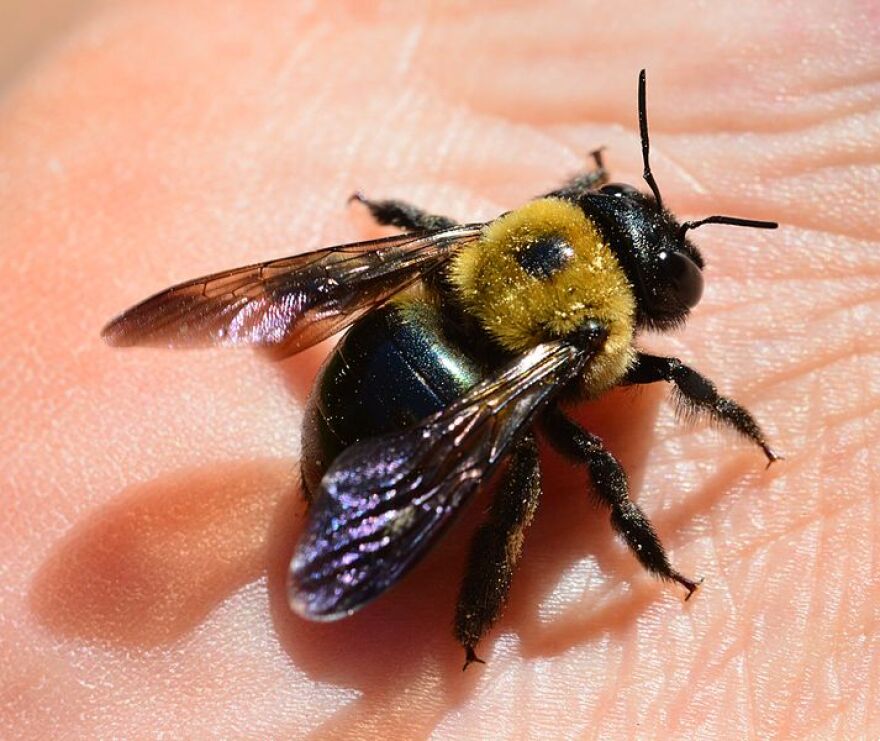Hello Gardeners, I’m Amanda McNulty with Clemson Extension. Carpenter bees overwinter in South Carolina. You’ll see them out foraging on warm days – looking for nectar and serving as pollinators as they fill their stomachs. Sadly, they nest in wood – and with the loss of habitat – the most available place for them to hollow out their cavities is wood that’s part of your house. They like unpainted wood so they tend to work on the undersides of wooden surfaces – the bottom of both a bench and a pew on our front porch and the undersides of the banister railings are favorite spots. The male bee, which has a yellow spot on his face , often hovers nearby and acts aggressively – its’ all show as male bees don’t have ovipositors and can’t sting.. He’s just hanging out hoping that he can find a mate. Hang unpainted boards with holes drilled partially through to give those carpenter bees an alternative nesting site.
Making a Desirable Home for Carpenter Bees

ysmad.com (Own work), via Wikimedia Commons



